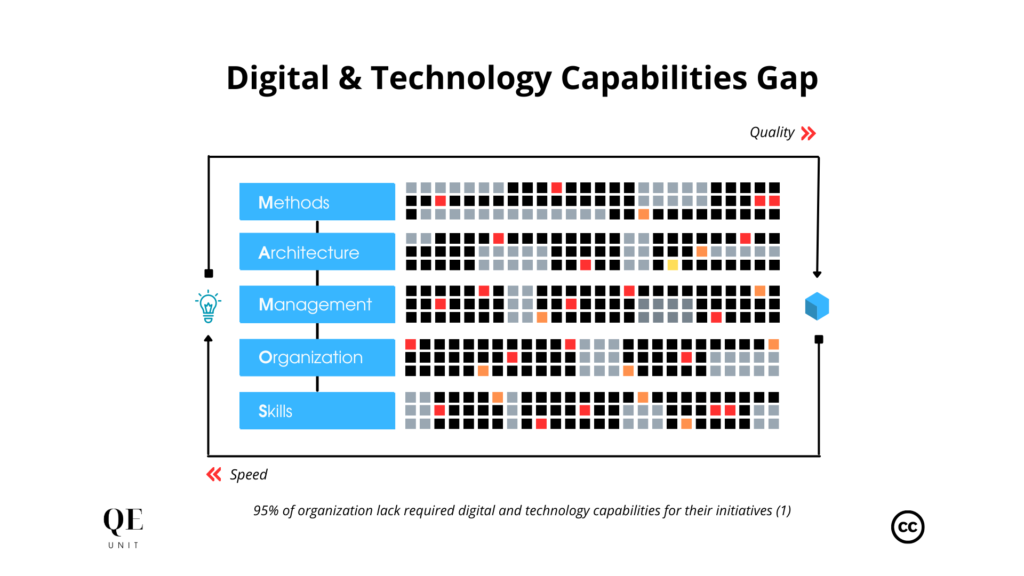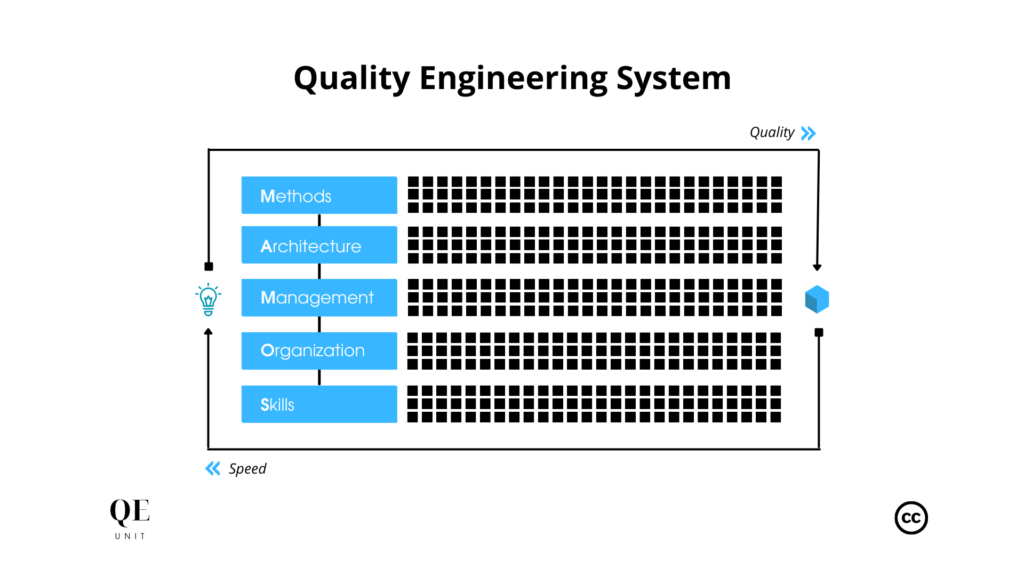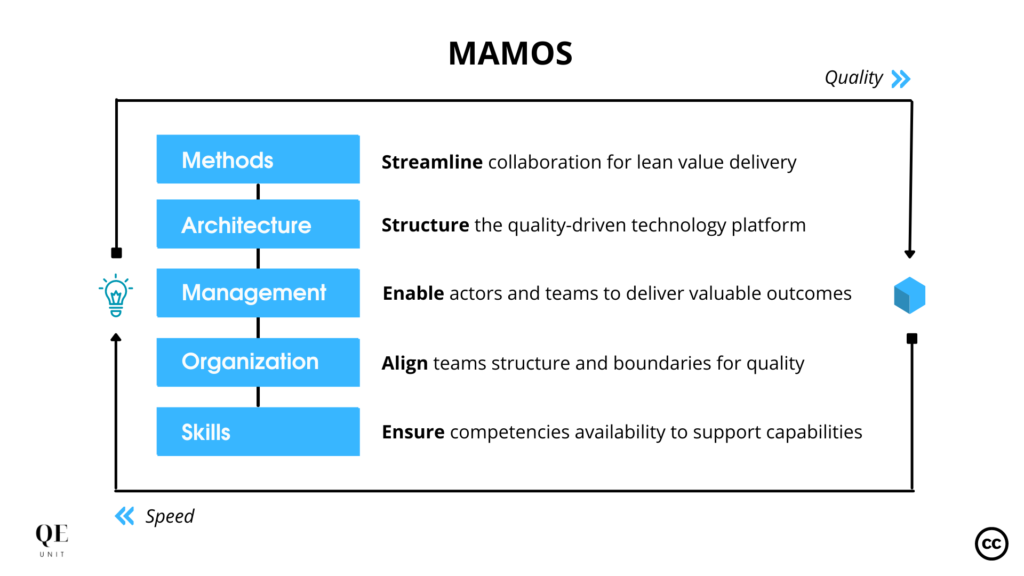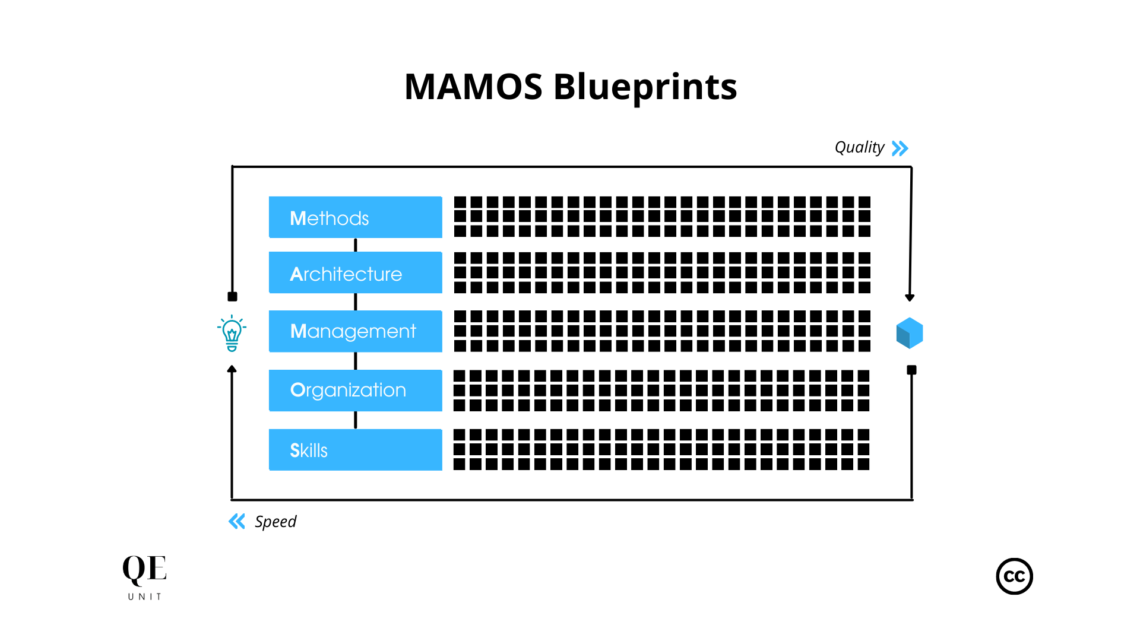Another day, another initiative.
People enjoy launching new things—it contributes to a sense of novelty, progress, and social validation. The main problem is when we want to build something on top of unstable foundations.
And that’s what happens too often in software: 95% of organizations launch digital and technology initiatives without the required capabilities—a number coming from the recent State of Organizations 2023 by Mc Kinsey & Company.
Let’s see why and what we can do about it.
It is harder to survive
Businesses are having a hard time. Tireless competition, rapid innovation, multiple constraints at legal, financial and sustainable levels. Even if we are adapting to the post-pandemic, it’s not going to be simpler with the times to come.
We moved from an ecosystem of VUCA to BANI standing for ‘Brittle’, ‘Anxious’, ‘Nonlinear’ and ‘Incomprehensible’. On top of more complexity, uncertainty increases the need for organizations to adapt faster to known unknowns.
Key inflections points make adaptation through software even harder:
- Demanding economy with new players now reaching $1b valuation in less than 6 months and impatient customers with high expectations.
- Social volatility reached a turnover of 25+% in exhausted positions and with a new generation expecting to work with high flexibility and low commitment.
- Disruptive technology that has accelerated during COVID and with the recent AI innovation, when most organizations are already late in adopting technology.
These forces translate into a harder time for businesses to survive. While the competition is fierce, customers that are more connected than they sleep (8h41 per day) expect a response in less than 1 hour or stop their relationship, doing the same at the first issue.
And the supply part is equally challenging with only 65 out of 100 technology positions filled and 33% of people wanting to leave in their first year which turnover costs 100-300% of their annual pay. But are there other alternatives?
Going digital is mandatory
This whole wave of digital transformation has some fashionable aspects due to the massive investments going there. But at its root, the change is mandatory to remain competitive with the continuous flow of other actors and change of customer behaviors.
Many companies with the pressure to transform have a hard time making investments decisions: keep the business revenue or diminish it to develop tomorrow’s digital core foundations? Not easy to decide with many people under payroll if you fail, and limited resources.
The risk is for the final picture to look like this.

The shortcut of short-term shortcuts decisions for speed is attractive: limited commitment and a way to show results. But in the mid-term, shortcuts accumulated a pile of debt that made the companies even slower to move than before, more complex, and more costly to operate.
Organizations have to maximize their investments with all these pressures of time, resources, and limited skills availability. And for most of them, microservices and increased cloud spend are not at all the solutions they need.
Investments choice are key
That’s where the point of building on the sand comes.
Many IT investments are seen as big buckets: services, people & infrastructures. While this categorization is helpful for financial control and budget reconciliation, it tends to focus the approach on projects and resources that miss the big picture. The next step being to launch initiatives that will fail trying to build upon sand.
The imperative for businesses is to become digital with the ability to adapt fast and be resilient with minimal resources. Yet, many of them fail to recognize the need to build a lasting software production competitive advantage with an integrated set of people, processes and technology.

A structured approach to focus investments is to:
- Define upfront what must be internal or external
- Rank the most critical internal areas to invest in
- Define in each area an integrated budget across buckets.
From there, we can start to ‘Build Better, Build Faster.’
Build Better, Build Faster
Quality Engineering is the architecture of software production to build lasting competitive advantage. Quality Engineering focuses at integrating the minimal set of people, processes, and technology to continuously iterate with Quality at Speed.
Its implementation relies on the Quality Engineering Framework MAMOS that structures the software production system in the 5 areas of Methods, Architecture, Management, Organization, and Skills.

The investment in these 5 areas of Quality Engineering enable building reliable and efficient foundations of software production to effectively develop the supporting capabilities of digital and technology initiatives.
Organizations able to reach a high-standard of software production and integration are the ones able to continuously adapt their business based on experimentation and the rapidly changing environment.
